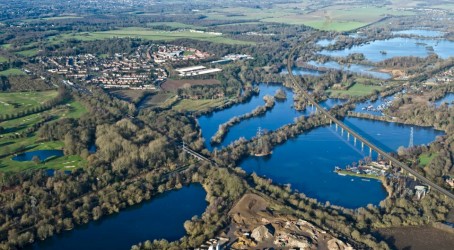Articles
The development of a new railway is a chance to mould the spine of the rail network for the next century. It lends itself to familiarisation with the latest in tried-and-tested technology and with how these developments can be adapted and translated to meet emerging passenger needs.
High Speed 2 (HS2) is a rail network that must meet the needs of contemporary society and those of at least the next few generations.These generations will differ from us in size, shape and travelling behaviours and expectations. Technically, the fundamental requirements remain the same – the railway must be safe and reliable. But how about “fit for purpose”?
With the passenger in mind, and reimagining the space inside a train, we are looking at how individuals interact with this space, and at personalisation and flexibility. This broad thinking is accompanied by deliberation on the details, such as the number and width of doors on the train, without compromising either the structural integrity of the vehicle or the passenger flow.
Research has provided some counter-intuitive solutions. Placing an obstruction in front of a doorway could help passenger flow by splitting and linearising passengers. A welcoming and open vestibule is a boon for managing passenger flow, while mixing “alighting” and “boarding” flows can lead to chaos. Working to certain objectives could impinge on passenger capacity and station needs.
Such interfaces between various parts of the railway are fundamental considerations at this stage of HS2. This is a golden opportunity to eliminate the legacy problems that frequently burden upgrade works and renewals. It is a case of balancing, so we can make the choices that are most beneficial for the whole life of the project.
We are drawing knowledge and expertise from all quarters. We have engaged manufacturers from the outset, allowing for a collaborative, progressive and well-informed discussion. We are also aggregating and assessing academic and qualitative research on passenger requirements, along with technological rail advances.
One example of such an advance is slab track, an alternative to ballasted track. It can seem a “wonder solution”, reducing the maintenance needed, and this brings the advantages of greater track availability and reduced maintenance costs.
However, slab track generally has a higher initial cost, and the frequency of its maintenance depends on several factors, including the ground it is founded upon. On a route with clay soil, which is prone to heave and settlement and seasonal movements, slab track could prove difficult to maintain and may not give an advantage over the high-frequency maintenance of ballasted track. Slab track’s benefits and disadvantages need to be closely assessed and quantified.
We are taking a holistic approach on operations. Requirements on standards of staff facilities and opportunities can be specified now, to ensure that the working environment created attracts the highest-quality staff and motivates them to work to the highest standard. Break-out areas can be located to take advantage of the best vistas. As in the Japanese system, a rail-operations apprenticeship could be put in place, to give those coming into the industry the tools and experience for the future running of the network.
HS2 is an opportunity to transform and streamline the rail experience. By looking at exemplar practice in high-speed rail around the world with regard to safety, comfort and reliability, and translating these to passenger needs using an integrated design approach, we can start building a network that will serve the passenger for the next century and longer, while bringing benefits and opportunities now.
